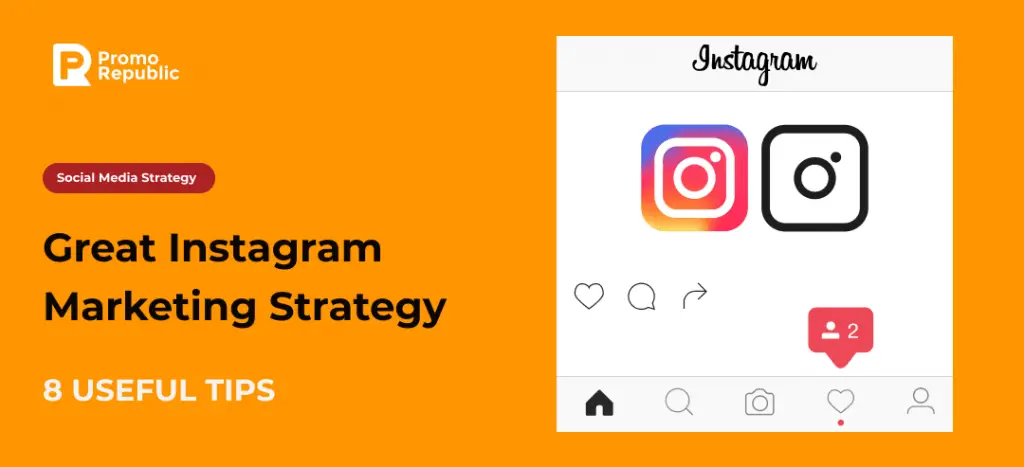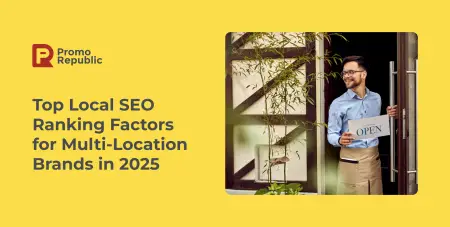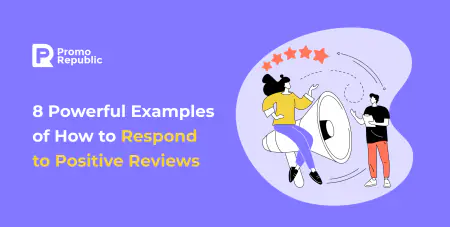8 Tips to Create a Great Instagram Marketing Strategy

Content writer and blog editor at PromoRepublic
Since its inception in 2010, Instagram has grown from an app posting cute kitty pics to a mighty marketing channel for brands of all kinds and sizes. A consistent release of updates and features helps businesses find their audience and interact with it to sell services and products. In this article, we’ll talk about how to build an effective Instagram marketing strategy and provide 8 simple tips.
Contents
- Define your goals.
- Optimize your profile.
- Research your competitors.
- Work on your brand identity.
- Create a content strategy.
- Use special tools.
- Track your analytics.
- Promote your profile.
1. Define Your Goals
It can be challenging to build a presence for a new brand, but this task can become a lot easier when you know where to start. First of all, you should lay out all the possibilities for your business and then define which is most effective. For example, you can work on your brand awareness, expand your reach, find more people interested in your product or service, grow an active and engaged community, increase brand loyalty, use Instagram to show excellent customer service, or even educate your followers.
Yes, there are many ways to grow your business, but only your goals will dictate which features, tools, and metrics to use. For example, getting more likes, comments, and shares will help you get more followers and increase engagement. If your goal is education – focus on the engaging text in each post and talk to your audience in the comments. If you want to show your products or services – pay more attention to your visuals. Each aspect of Instagram serves a different purpose, and the number of followers can grow significantly because of any of them.
2. Optimize Your Profile
This part is relatively easy but very important. Here is a list of things you should pay attention to:
- Business profile. Make sure that your account is switched to business, so that you can add additional information about your industry, location, and your contacts, such as phone number and email.
- Profile picture. The best practice here is to use your brand’s logo or the same image as other social media platforms. People should be able to notice your brand right away when searching.
- Profile name. Try to use your brand’s name or at least a slightly different variation. As with the profile picture, people should be able to find your business by its name easily, or you can lose a potential customer.
- Come up with a catchy bio. They don’t provide many characters so try to make it clear and concise. It represents what your brand is all about. This is the first thing people will see after your profile picture and profile name, so first impression counts more than anything right here. Put a call to action for quick engagement. Most importantly, don’t forget about adding a link to your site. It’s the only place that will be visible.
- Think about your hashtag. Hashtags are a significant part of Instagram’s marketing strategy. They are used on Twitter, Facebook, and many other social media platforms. The beauty of Instagram is that you can choose one or several hashtags for your brand. You can use them on your posts or on posts with specific topics because people can follow hashtags too. Choose yours and put it in your bio so your followers will know. For example, it can be your brand name or a variation of it. People can tag your brand in their posts, too, so you can connect with them better.
3. Research Your Competitors
If your brand is new on Instagram, check out what your competitors are doing. As you share the same or almost the same target audience, you can better understand which content works and even avoid common mistakes.
- What type of content are they posting?
- How often?
- What hashtags are they using?
- Is there any user-generated content?
- What posts generate the most engagement and communication?
Gather up all the information and analyze it thoroughly. You may discover solutions that will make your brand’s life a lot easier.
4. Work on Your Brand Identity
On Instagram, a solid visual identity can help convey your brand message, make you look more professional, and get you many followers. It’s all about how your brand looks and feels in every post you share. Having a solid identity means that people will align with your brand’s personality and values, even without lengthy explanations. This is reflected in the brand’s voice, post colors, mood, font, presentation style, and overall profile appearance.
To build a strong brand identity, you should know who you are talking to and what you are trying to tell. If people understand that you share the same values, they will become your followers and customers. Don’t be afraid to get specific because even the tiny target audience can become lifelong fans and brand advocates.
5. Create a Content Strategy
Each of your posts has value for your followers and your brand. Your content can be entertaining, inspirational, or promotional, but the most important thing is that it is relevant and matches the promise your brand is offering. Don’t put too many promotional posts in your feed because it will push people away even if your products or services are of top-tier quality.
When working on your content strategy, pay attention to these 3 points:
- Content theme
- Content pillars
- Posting plan
The first point is all about the brand identity we were talking about above – colors, fonts, mood, and voice. Also, the format of your posts because, as you know, you can choose from single images, carousel posts, branded videos, IGTV videos, stories, or lives.
The second point – pillars – is about goals your posts pursue: educate, inspire, entertain, convince. You should choose the one relevant to your buyer’s journey.
Awareness – In this stage, you want to build know-like trust with your audience, so educational articles or guides will be the best option.
Consideration – here, you want to educate your audience and stay top-of-mind, so branded videos, behind the scenes, or FAQs that answer your customer’s objections will be great.
Decision – when you promote your offer or launch a new product. If customers are ready to make a purchase, they’ll be apt at reading your past clients’ reviews, learn about your product features or get a promo code.
A posting plan will help you visualize your content strategy and schedule your posts for the best results. Check out PromoRepublic features to create and organize content, get approvals from clients, run ads, and report on performance.
6. Use Special Tools
If you want to make branded posts of various sizes for Instagram feeds or stories, improve your photo quality or edit videos, there are endless tools to work with your marketing strategy and content.
For example, with PromoRepublic, you can not only automate posting to your Instagram profile but can schedule with time slots suggested for your industry, recycle the most successful posts and reuse them.
7. Track Your Analytics
While choosing tools to work with, pay attention to the ones that help you analyze your content. Instagram business profiles have access to analytics to help you see how followers interact with your account, but this function is not enough. Deep analysis is key to understanding your demographic, optimizing your content, and evaluating your overall Instagram marketing performance.
Your profile analytics is more than just finding out which photo, video, or story performed best. By defining and tracking key metrics over time, you can develop a great content strategy for your Instagram that’s guaranteed to get you better results. For example, by using engagement data such as likes, comments, or clicks, you’ll be able to tell which type of content performs best so you know what you should be posting more of.
From here, you can then compare all content types against each other to determine which your audience prefers. For example, if you find that your audience is more interested in videos, you may invest more heavily in top-quality video production and put less effort into photos.
8. Promote Your Profile
Followers don’t appear by accident, so you need to help them find your brand by promotion. For this purposes, you can do this:
- Use hashtags.
- Put the link to your Instagram account into your email.
- Put the link to your Instagram account on your other social media pages.
- Put the link to your Instagram account on your site.
- Work with influencers.
- Run paid ads.
- Make some quizzes or giveaways.
- Post user-generated content.
- Use your branded hashtag on your physical products.
- Create challenges.
- Be active on your profile, participate in communication with your followers, and don’t let your engagement rates take a dip.
Instagram continues to grow and evolve as a marketing platform. There are a lot of tools for your brand, and a lot more are coming our way. So it is crucial to build an effective Instagram marketing strategy not just to be successful on the market but to be competitive and get your part of the industry’s target audience. To do this, you need to know all the Instagram tricks and insights so your business will gain a lot from it and you will achieve your goals. We hope these tips will help kickstart start your journey or at the very least improve your current strategy.












